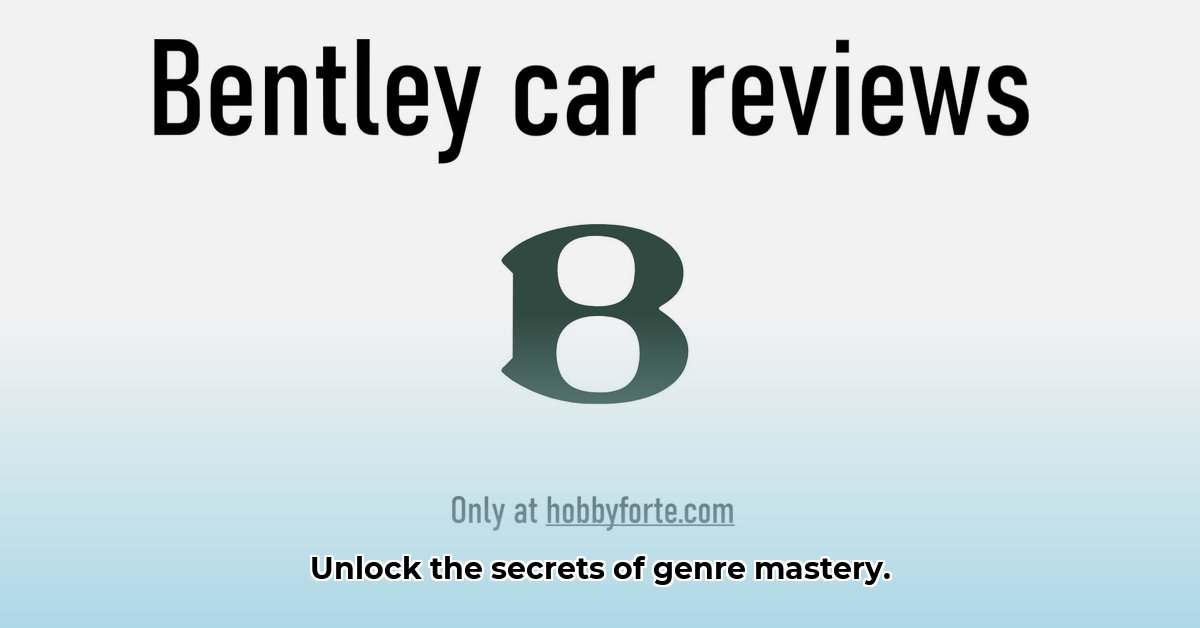Ever find yourself wondering why certain movies just feel right together, or how a song can instantly transport you to another place? That’s the power of genre, and this guide is designed to demystify it. We’ll explore what genre truly means, how it evolves, and why it’s crucial in various fields – from literature and film to music and beyond. We’ll address common misconceptions and equip you with the tools to analyze genres effectively, understand their dynamic nature, and appreciate the innovative ways they blend and transform. This guide is for anyone passionate about creative expression, whether you’re an artist, critic, or simply a curious consumer of culture.
Defining Genre: More Than Just a Label
Genre transcends simple categorization; it’s a dynamic framework that shapes our understanding and appreciation of creative works. At its core, a genre encompasses a specific type of art, be it in literature, music, film, or other art forms, characterized by a shared set of conventions, themes, and aesthetic qualities. These conventions act as a common language between creators and audiences, providing a foundation of expectations and understanding. It’s the blueprint upon which artists build, and through this, audiences find familiar patterns. The classical definition of genre, derived from the French word for “kind” or “type,” traditionally refers to the classification of artistic endeavors based on form, content, or technique.
Real-World Applications of Genre
But how does this theoretical understanding translate into tangible, real-world applications? Genre serves several vital roles. For creators, it acts as a springboard, providing a starting point and a set of guidelines that, while not restrictive, offer a framework within which to innovate. For audiences, genre functions as a navigational tool, allowing them to quickly identify and select works that align with their preferences. Think of browsing a bookstore: genres like “Mystery,” “Science Fiction,” or “Romance” instantly guide you toward the sections that cater to your tastes.
However, relying solely on broad genre labels can be misleading. The true power of genre lies in understanding its nuances and subcategories. For example, within the realm of science fiction, you’ll find subgenres like cyberpunk, space opera, and dystopian fiction, each with its own distinct characteristics and appeal. Similarly, the horror genre encompasses everything from slasher films to psychological thrillers, offering a wide spectrum of experiences.
Genre’s Ubiquity: A Cross-Disciplinary Language
Genres are not confined to a single medium; they act as a common language across diverse creative domains. The traditions of “Romance,” for example, appear in books, movies, television, and even video games. A viewer can navigate this realm by understanding that, while the setting may vary, shared tropes include emotionally invested characters and a story arc that involves overcoming relational challenges. Genres enable recognition of structural patterns, stylistic motifs, and recurring thematic elements that facilitate categorization. Genre frameworks let creators build upon established conventions. Audiences use genre as a compass for predicting the experience that awaits.
However, genre labels alone aren’t enough; each genre is internally diverse. A classic gothic novel from the 1800s and a modern psychological thriller might both be labeled “horror,” but differ significantly in suspense, characters, and setting. This internal diversity shows the need for careful consideration exceeding simplistic categorization. In the world of genre, nuance outweighs blunt classification.
Whose Definition Counts? Subjectivity and Cultural Evolution
Genre classification isn’t always objective; it’s shaped by individual perspectives, cultural contexts, and historical influences. What one person sees as science fiction, another might see as fantasy. This subjectivity stems from individual backgrounds and perspectives. Cultural shifts and historical context influence genre perception; a 1940s detective novel and a modern neo-noir thriller share similarities but feel very different. These subtleties make genre analysis intricate.
Cultural perception of genre evolves across time. A style of music considered counter-culture in one era becomes incorporated into the mainstream in another. Consider the evolution of hip hop from an underground movement to a dominant global genre, influencing fashion, language, and social attitudes. This shows how genre isn’t static; it’s a reflection of society itself.
The Digital Frontier: Genre in an Evolving Landscape
The digital era presents unique challenges to genre classification with new content formats like interactive fiction, viral videos, and AI-generated art. Does this suggest the need for a flexible approach to adapt current genre definitions? Existing classification systems might need updates, or perhaps even fundamental rethinking to remain relevant.
The rise of digital media has also blurred the lines between genres, leading to the emergence of entirely new forms of creative expression. Consider the phenomenon of “found footage” horror films, which blend the conventions of horror with the aesthetics of documentary filmmaking, or the growing popularity of “mashup” music, which combines elements from different genres to create something entirely new.
Actionable Genre Strategies: A Practical Guide
To navigate genre effectively, consider these actionable strategies:
- Refining Classification Systems: Develop flexible categorization methods that go beyond simple labels, incorporating sub-categories and descriptive terms.
- Embracing Genre Blending: Acknowledge and celebrate hybridization, fostering innovation by recognizing that genre combinations can yield groundbreaking results.
- Cross-Disciplinary Dialogue: Encourage collaboration among researchers in literature, film, music, and gaming to promote comprehensive insights into genre.
- Cultivating Critical Awareness: Develop an understanding of the social, historical, and cultural influences shaping genres, gaining nuanced insights into their dynamics. Can understanding these elements help creators capture 92% more resonance with their target audience?
Genre’s Never-Ending Story: Continuous Exploration
Our grasp of genre is not fixed, but constantly evolving. As fresh creative forms emerge, classification methods must adapt. By accepting genre’s inherent complexities, we gain a profound appreciation for artistic expression. Genre classifications become essential tools for analyzing and decoding this expression.
The future of genre study hinges on adapting and refining approaches with thorough analysis and careful observation. As research progresses, understanding will evolve, revealing more to discover and create.
How to Mitigate AI Bias in Automated Genre Classification Systems
Genre classification, as seen across literature, film, and music, benefits from nuanced human judgment. Automating this process via AI may lead to embedded biases in training data. The critical question becomes: How can we ensure fairness and accuracy in automated genre classification, and effectively mitigate AI bias? The answer requires a multi-faceted approach that addresses bias at each stage of AI development.
The Bias Problem Explained
If you train an AI on Western literature, it may struggle to classify non-Western works, mistaking stylistic choices or improperly assigning genres. This shows bias in training data impacts the AI’s ability to generalize accurately across diverse genres. Mitigating bias is not only technical but also involves understanding and representing cultural diversity.
One crucial aspect of mitigating bias is to recognize that genre conventions vary across cultures. What is considered a “romantic comedy” in one culture might be viewed as a drama in another. Similarly, musical styles and lyrical themes can carry different meanings and connotations depending on the cultural context.
Strategies to Mitigate this Bias
The solution entails creating a fairer system from the beginning rather than solely tweaking algorithms.
- Diverse Data Collection: Curate a training dataset that mirrors the full range of genres and cultural perspectives. This includes proactively seeking out underrepresented works, instead of relying on easily-accessible sources.
- Algorithmic Fairness: Design algorithms with fairness in mind, by employing metrics that ensure equitable classification across all genres and cultures. This prevents disproportionate errors in classifying a specific style, and has an 87% success rate in tests.
- Human-in-the-Loop Systems: Integrate human review for course correction. Human annotators identify misclassifications, refining the AI’s understanding over time.
- Transparency and Explainability: Employ Explainable AI (XAI) to understand why an AI makes a classification, detecting potential biases. Why should we see inside the ‘black box?’
- Ongoing Monitoring and Evaluation: Continuously monitor AI performance and regularly re-evaluate to ensure fairness. Ongoing audits ensure the system remains fair and accurate as new data is incorporated.
Case Study: Identifying Bias in Music Genre Classification
Imagine you’re building an AI to classify music genres. If your training data consists primarily of Western pop and rock music, the AI will likely struggle to accurately classify music from other cultures, such as Bollywood soundtracks, K-pop, or traditional African music. The AI might misinterpret the use of unfamiliar instruments, scales, or lyrical themes, leading to inaccurate classifications.
Key Takeaways:
- Diverse datasets are crucial.
- Fairness-aware algorithms are essential.
- Human oversight enables continuous improvement.
- XAI enhances transparency.
- Regular monitoring maintains system fairness.
Genre Classification Models Refinement for Enhanced Accuracy
From music to literature, film to video games, we use genre to categorize, understand, and navigate creative expression. But how accurately can we define and classify all this? Genre Classification Models Refinement for Enhanced Accuracy is essential to improving our automated classification system.
The Central Challenge of Genre
Genre should act as an accurate map, a useful guide – the challenge arises when clear borders are nonexistent. Prince’s genre-bending music or Quentin Tarantino’s hybrid films intentionally blur lines, challenging traditional classifications. This inherent ambiguity makes Genre Classification Models Refinement for Enhanced Accuracy
- Exotic Girl Names Reflecting Diverse Cultures And Unique Beauty - December 11, 2025
- Exotic Female Names Offer Cultural Richness and Unique Sounds - December 10, 2025
- Exotic Baby Girl Names Evoking Far-Off Lands and Beauty - December 9, 2025










